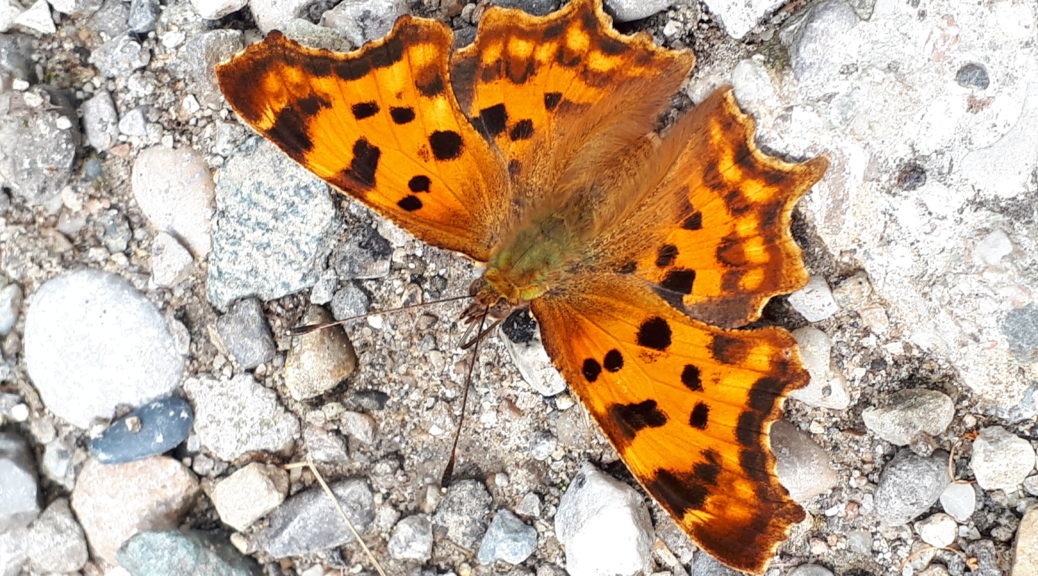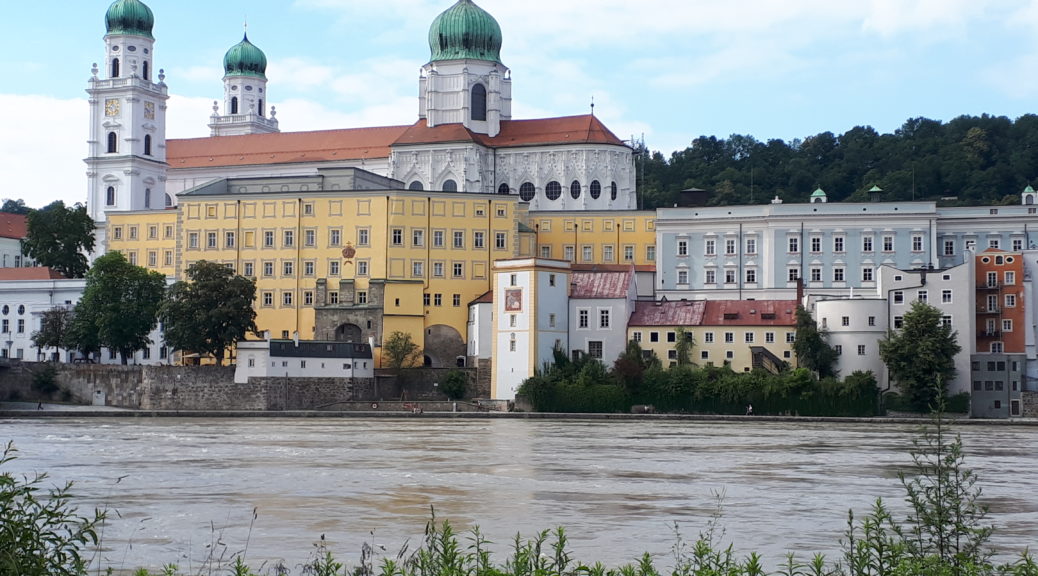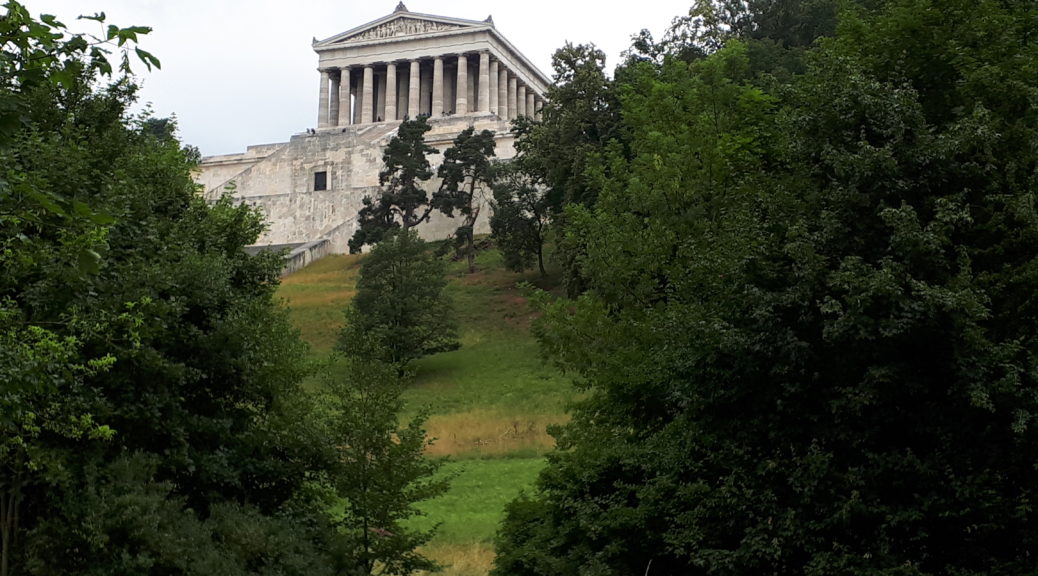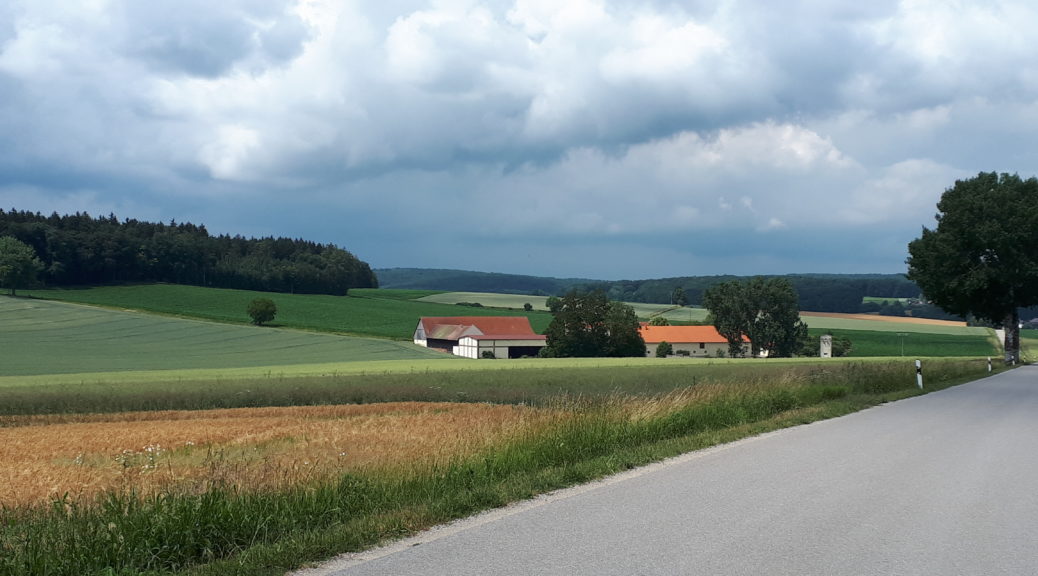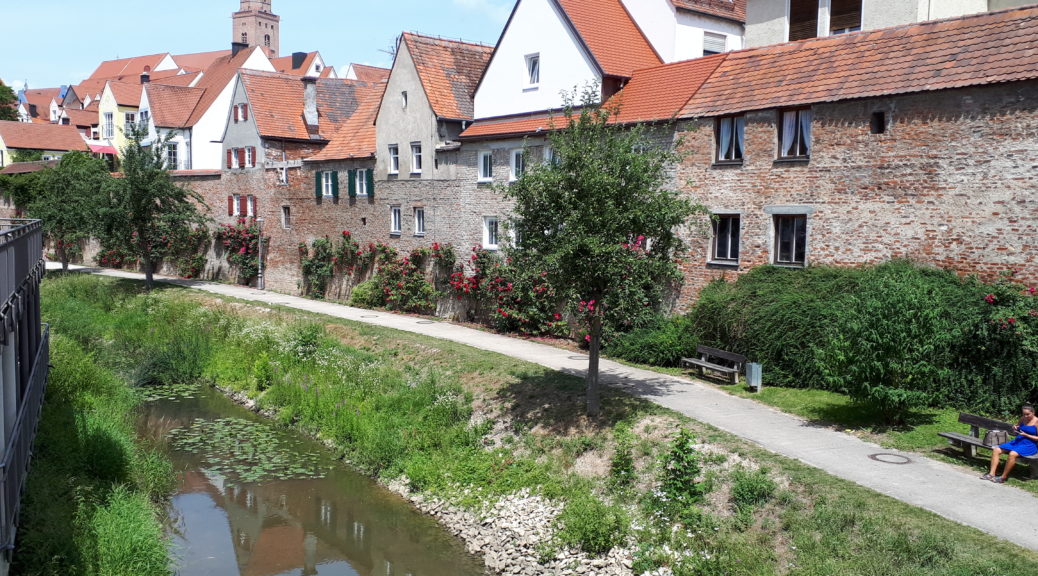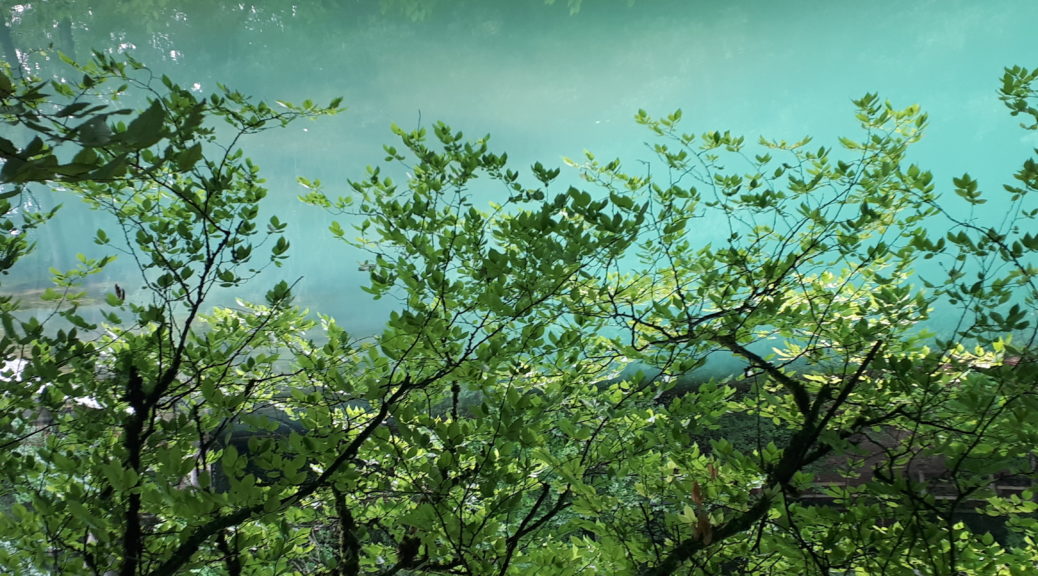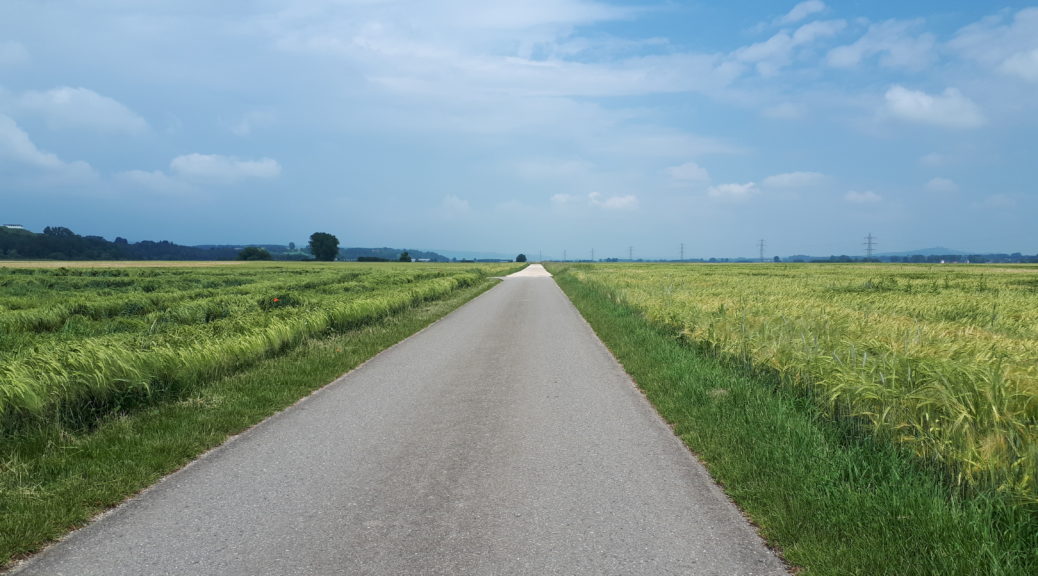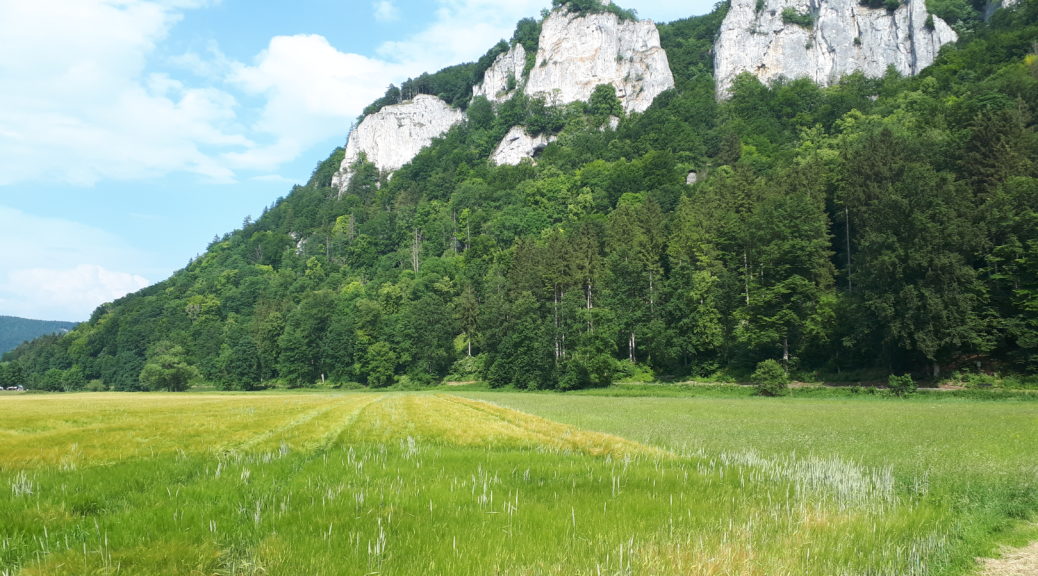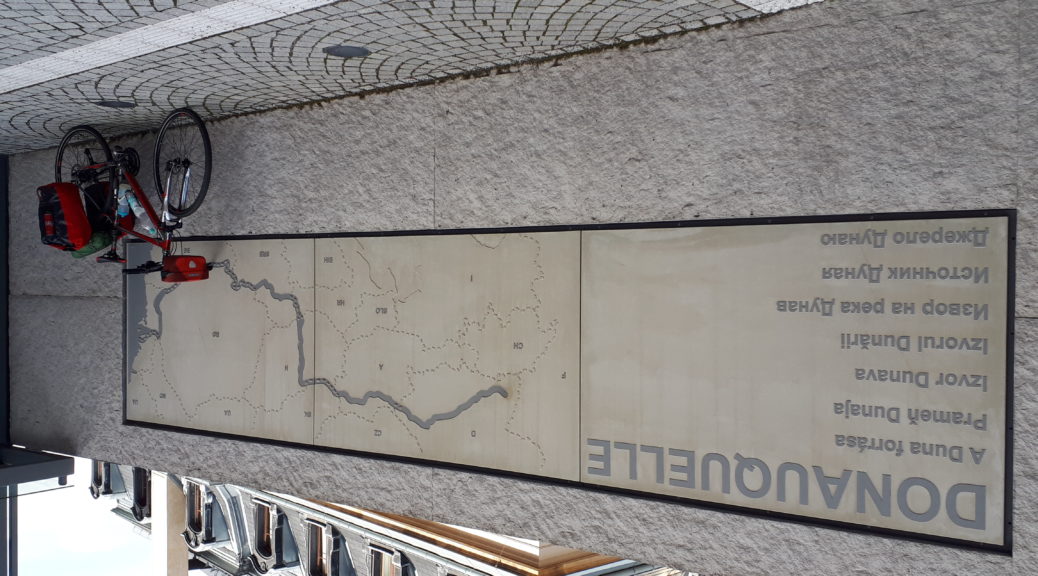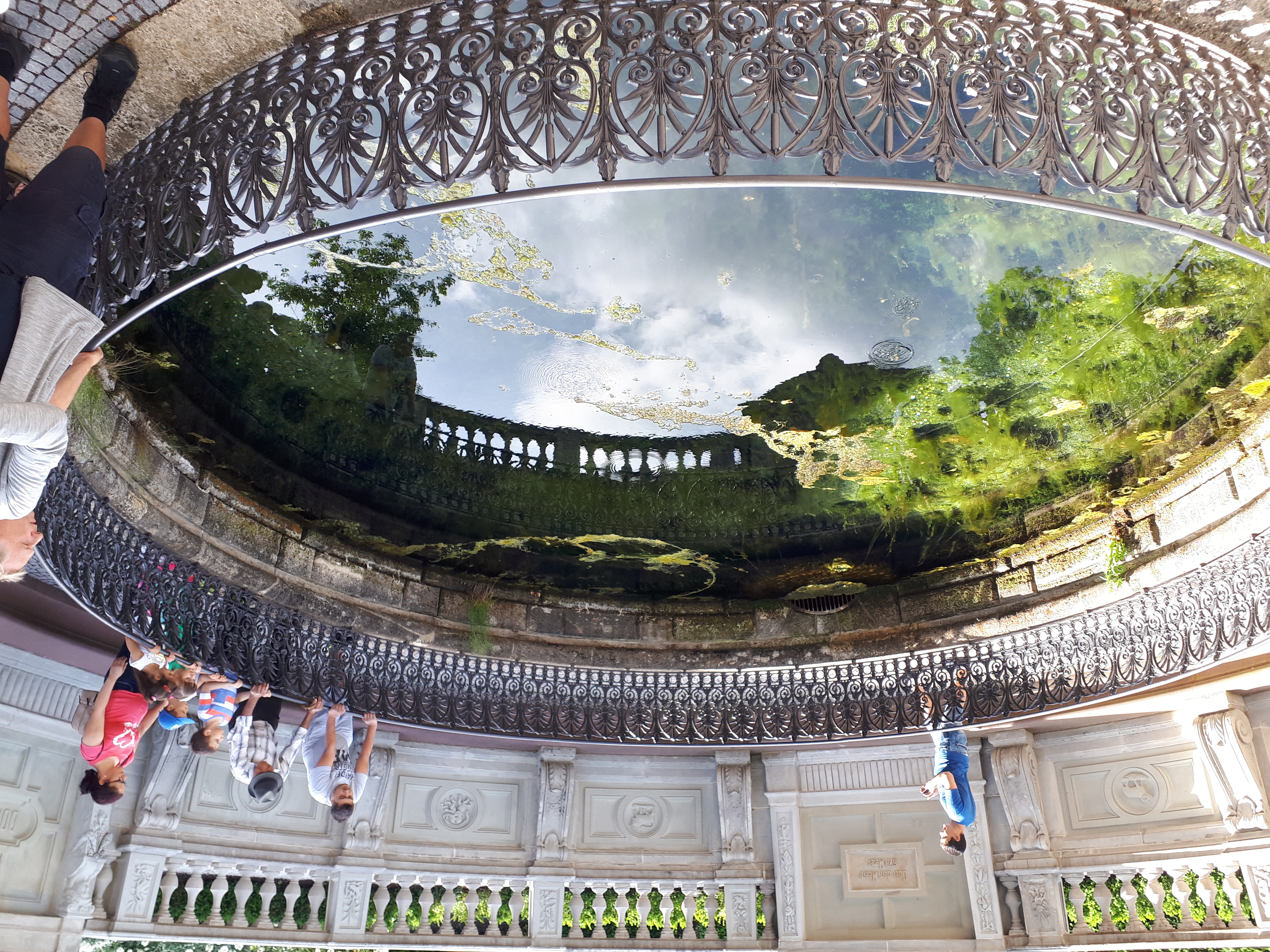Today’s cycle took me along the Danube valley, almost all on really well surfaced cycle paths, or on country roads. From my perspective the route was not all that interesting as it took me through intensive agricultural land, across many dams and through the numerous towns and villages along the Danube. And as it was Saturday cyclists of all types and shapes were on the road, which was nice to see. Everywhere I looked there were cyclists stopped at cafes, putting more calories into themselves then they could possibly use up, at least not without breaking into a major sweat. Which they didn’t; apart from myself I didn’t see a bead of sweat on anyone. The challenge for me was not to get too detracted by the cakes and ice cream on display; I succumbed once for a small (ok, large) slice of apfel strudel but it was by way of a cultural experience.
The early part of the cycle brought me along a very flat and quiet road leading from one of the towns. It obviously was used as a training run, for I met many cyclists with their tri-bars and carbon-rimmed wheels. God, I love the sound those wheels make when in the hands of a powerful cyclist on a good road- the Vvooo- Vvooo- Vvooo as they power along. I began to regret bringing my trail bike on this trip, for think of the fun I could have with my road bike on these roads. But after the forth or fifth of these lads powered past me leaving a whiff of aftershave or lynx in their wake, I came to the conclusion they were all a shower of poseurs, and my trail bike was perfectly fine, thank you!
I pulled into a small village next to the dyke around midday. As I cycled down the main street a really load siren went off- scared the lining daylights out of me. Must have lasted for 15 or 20 seconds. I was wondering had Trump finally initiated WWIII or had some other calamity befell the world of which I was unaware. A couple of minutes later an old man walked up the street. I stopped and asked him what was the alarm? He looked at me quizzical – What alarm? The siren, just a couple of minutes ago? Ah! 11.55 was it? Each Saturday- it is a test alarm to make sure the flood alarm works. Well it works alright, but I suspect the locals no longer hear it.
At another one of my stops, eating a snack by the river shore, a young family of goosander swam past. Unlike our common mallard, which are a dabbling duck (Ogden Nash famously noted that ‘…when it dines or sups, it bottoms ups’) goosander are a diving duck. The family of a mother and ten chicks moved upstream, no more than 10 metres from me, like a troop of highly drilled synchronised swimmers, diving and sufracing in unison. That was a special treat to see, for goosander are a scarce duck in Ireland, with ony a handful breeding each year in Wicklow.
Later on in the day I came to a patch of wet marsh, and the toads were in full voice calling away. They really do make a racket when they get going.
It was only for the last 10km or so of the day that the route brought me to fruit growing region. The cycle track was now lined with cherry and apple trees, and there were stalls selling apricots, peaches and strawberries every so often. Then I arrived to a valley with vineyards creeping up the steep slopes.
Now I know it is stating the obvious but cycling the second longest river in Europe is, well, long. I have been cycling now for ten days, and while I know I’m no Peter Sagan, I have averaged almost 110 km each day. So I have covered more than 1,000km yet I am not quite a third of the way along. There is still just over 2,000km between me and the Black Sea.
To put this in perspective, if I had chosen the Shannon rather than the Danube, I’d have cycled it’s length three time already! So, Im not that sure this was such a good idea.
Now I am married to a wonderful woman, and one of the many things that I love about her is that she is a rock of sense. In my time I have come up with quite a few hair-brained ideas, but she has always been there to bring perspective (i.e. to tell me I’m being daft). She can analyse and synthesize schemes in a blink of an eyelid. But when I first mooted the idea that it would be a good thing to cycle down the Danube, I was expecting more ‘perspective’ – instead I was greeted with a ‘ Well isn’t it well for some?’. Now Josephine is working really hard to expand her SpeltBakers business, so I suspect her finely tuned radar for daft ideas may, for once, have let her down. As I sit by the bank of the Danube, somewhere in the middle of Austria, wondering what the hell I signed up to, I blame the wife myself.
But after the second beer and musing on life, sitting here watching the barges chugging upstream and listening to the swifts screeching overhead, maybe, just maybe, she got it right once again. It is only 2,000km and sure isn’t it all downhill!


